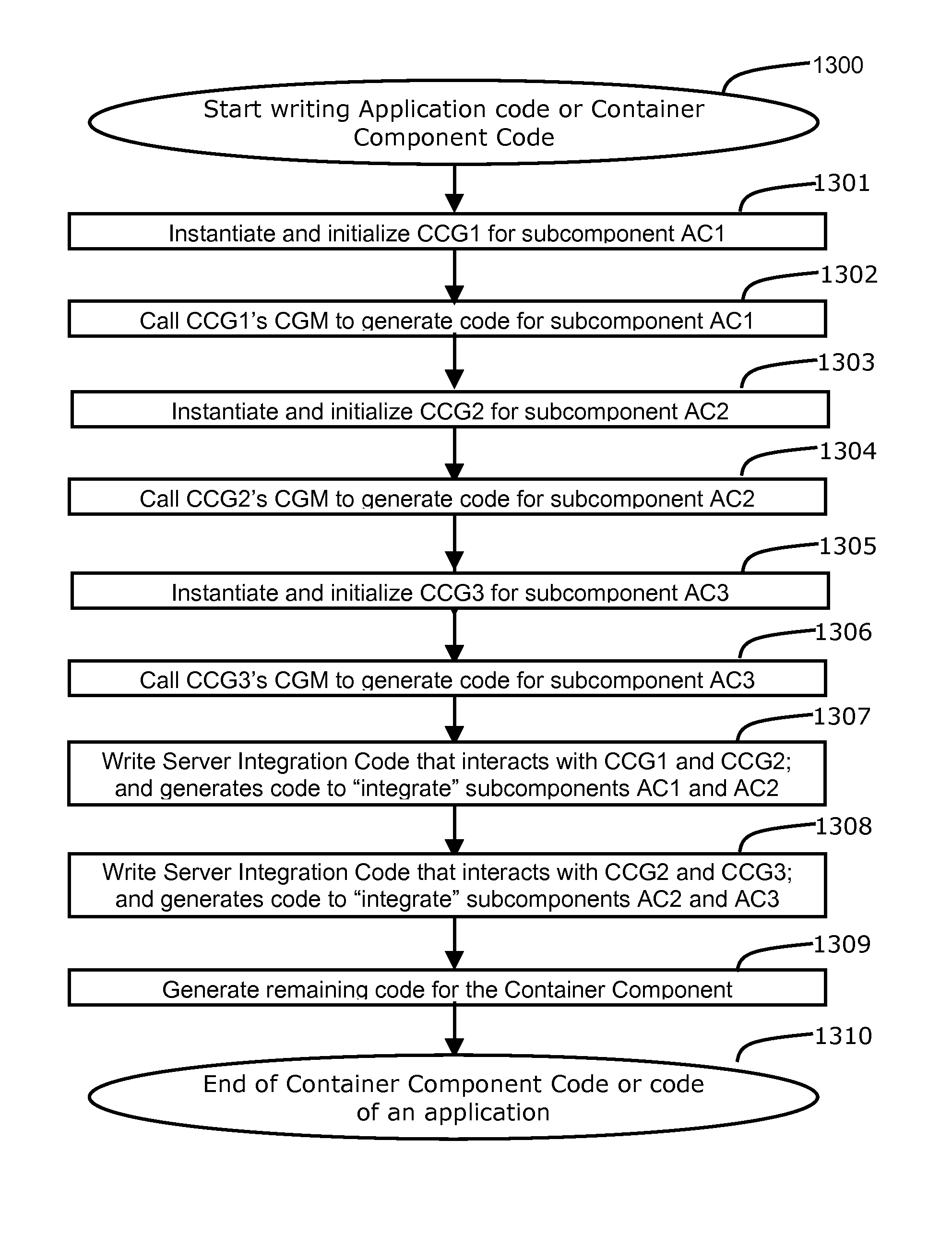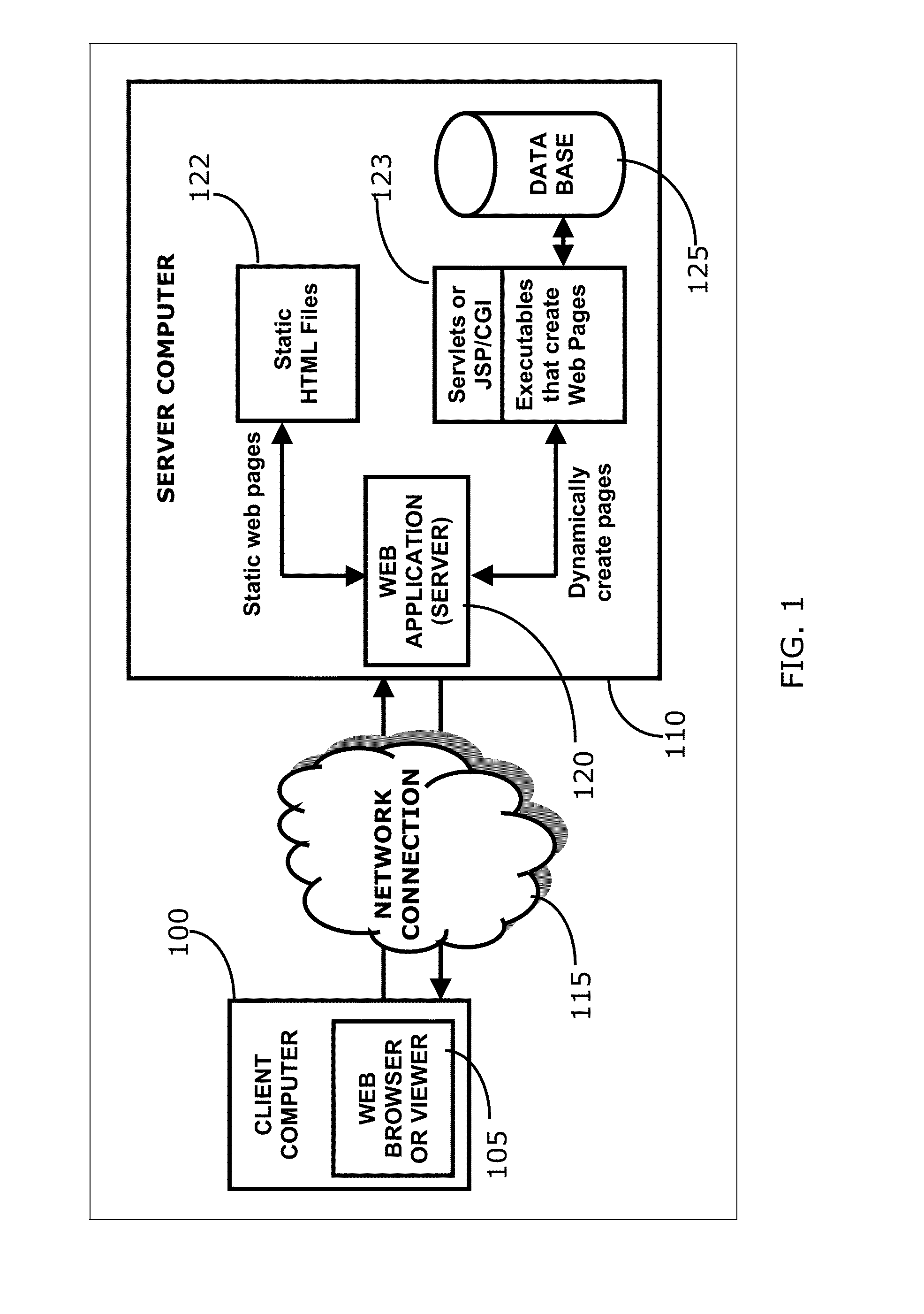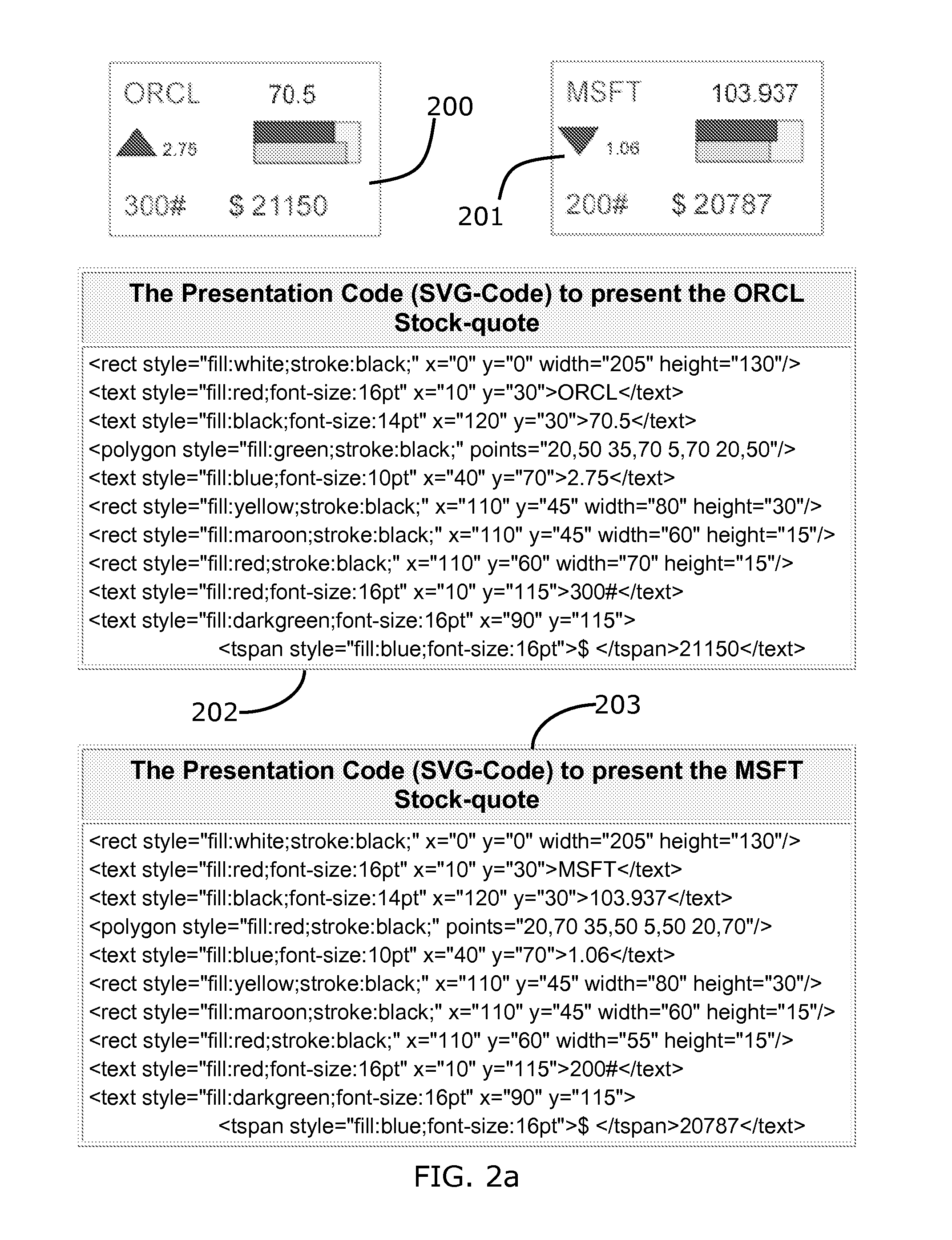System and method of application development
- Summary
- Abstract
- Description
- Claims
- Application Information
AI Technical Summary
Benefits of technology
Problems solved by technology
Method used
Image
Examples
example 1
[0162]The presentation image of a full pie chart component is shown in FIG. 3a. The full pie chart component contains subcomponents such as legend, Info-table and pie slices (for presenting all the slices of the pie chart). Three presentation code sections may respectively present the subcomponents, which are embedded in the presentation code of the container pie chart component. The presentation code of the pie chart contains communication code allowing the subcomponents to collaborate and communicate with each other. When the mouse moves over any of the legend items, the component on the screen highlights the corresponding slice in the pie, and displays its relevant information in the info-table.
[0163]The presentation code of the component comprises the presentation code of the subcomponents such as legend, info-table and pie-slices. It may also contain additional code for performing miscellaneous tasks such as placing the subcomponents within the component. A separate ch...
example 2
Pseudo Code for Using CGM of the CCG
[0175]The basic steps for generating presentation code are shown by following pseudo code:[0176]10. GUI_CCG_PieChart Pie1=new GUI_CCG_PieChart(“Portfolio at the End of 2nd Quarter”);[0177]20. Double val[ ]={10000, 12000, 14000, 16000, 18000};[0178]30. String names [ ]={“Sun”, “Microsoft”, “IBM”, “Intel”, “Oracle”};[0179]40. Pie1.setData(5, val, names);[0180]50. Pie1.CGM(page_info, out);
[0181]First, a Java class, GUI_CCG_PieChart, is defined. In line 10, a class object is instantiated with a title “Portfolio at the End of 2nd Quarter”. The object saves this title in the string variable and uses it in generating presentation code. In line 20, an array of doubles is assigned with five performance numbers, one for each of five companies. In line 30, five name strings are assigned with respective company names. The value assigned to a double in the “val” array corresponds to the company name in the “names” array with the same index. In line 40, Pie1.se...
example 3
Pseudo Code of Stock Quote Component
[0199]The following is an example of an ACCG that generates presentation code to present the stock information (FIG. 2b). The ACCG in this example is a Java-class component that takes a company ticker symbol as input and generates presentation code to present the stock information as shown in the figure.
[0200]The ACCG of the stock component implements a method or a constructor for setting a ticker symbol. The application developer may implement application logic in the class definition. The CGM uses the ticker symbol to access other data sources for the real-time stock information of the company associated with the ticker, and then generates the presentation code. To generate the components presentation code, it may use GUI CCG classes of table and charts to present its subcomponents.
[0201]A stock object is instantiated with the ticker symbol of the company as below:
[0202]StockInfoPCF SiACCG1=new StockInfoPCF(“SUNW”);
[0203]An application developer...
PUM
 Login to View More
Login to View More Abstract
Description
Claims
Application Information
 Login to View More
Login to View More - R&D
- Intellectual Property
- Life Sciences
- Materials
- Tech Scout
- Unparalleled Data Quality
- Higher Quality Content
- 60% Fewer Hallucinations
Browse by: Latest US Patents, China's latest patents, Technical Efficacy Thesaurus, Application Domain, Technology Topic, Popular Technical Reports.
© 2025 PatSnap. All rights reserved.Legal|Privacy policy|Modern Slavery Act Transparency Statement|Sitemap|About US| Contact US: help@patsnap.com



